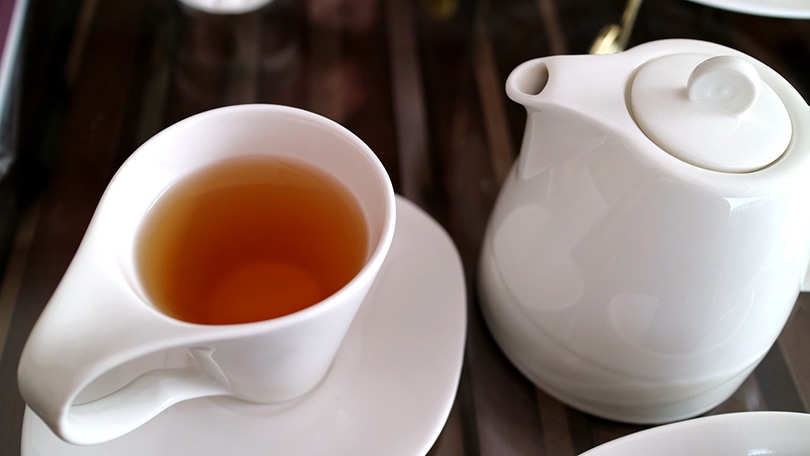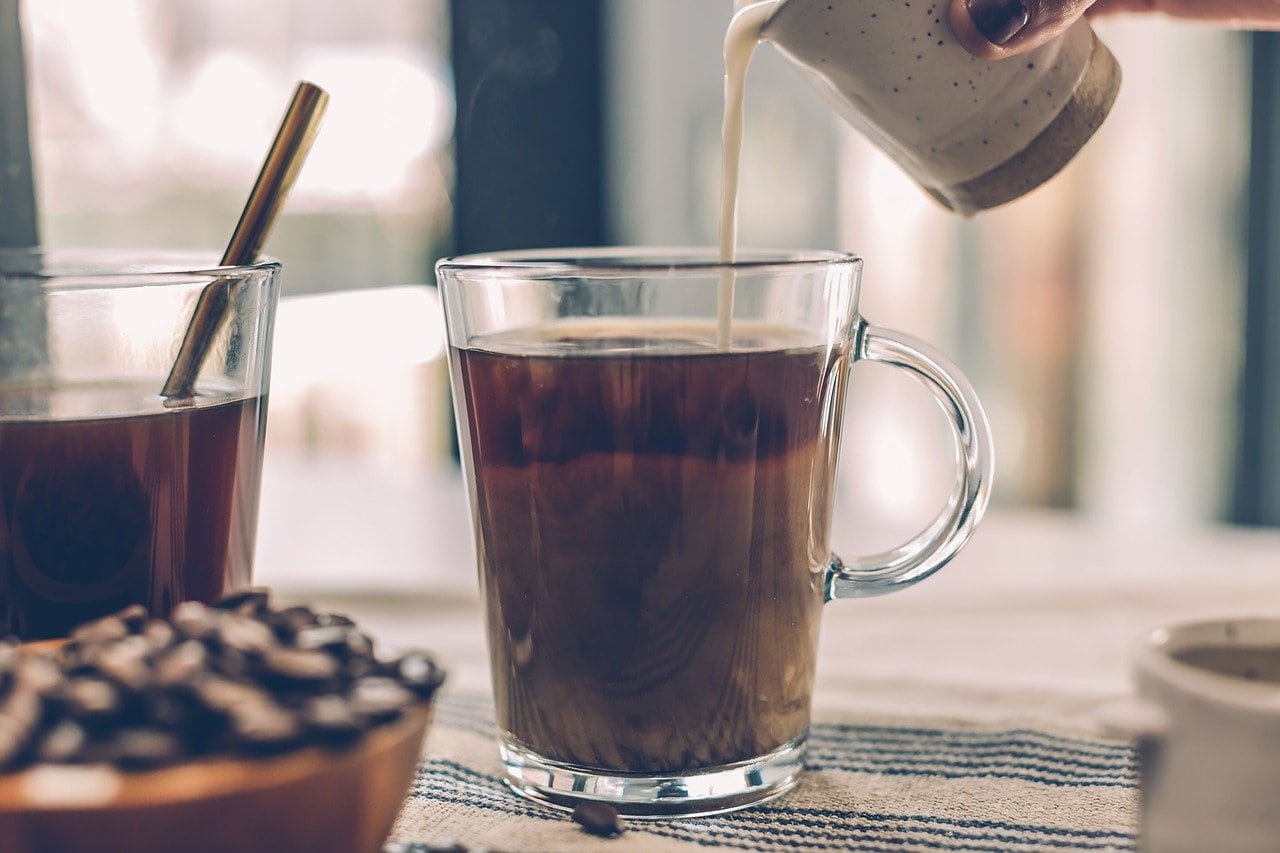
Tea may have always been a winner in areas like Asia and the United Kingdom, but it’s now one of the most popular drinks the entire world over. Finding itself in the number two spot on the list of most-consumed beverages, situated confidently behind good old water, tea is a popular go-to for anyone who wants to unwind, enjoy a get-together with friends, or simply read a good book in the afternoon.1 While records show tea was enjoyed nearly 2000 years ago in China, today it is easily found in most coffee shops, cafes, and grocery stores on every street corner. When you take a look at the many types of teas and flavor options available, it’s easy to see why so many people make this tasty drink one of their preferred beverages.
While tea is more popular than coffee, it offers drinkers more than a feeling of sophistication and relaxation. Many types of tea have caffeine. Oolong tea can have anywhere from 16 mg to 55 mg per cup. While several factors determine how much caffeine is a cup of tea, most agree that on average a cup of oolong tea has roughly 37 mg of caffeine per 8-ounce cup. Luckily, for those who are fans of this yummy tea, that is not considered a lot of caffeine. The big question is, what makes things change so dramatically per cup? If you’re curious about how much caffeine is in oolong tea or what determines these numbers, read below. We’ll learn more about oolong tea, its caffeine content, and some of the health benefits it may provide.

What Is Oolong Tea?
Oolong tea is hardly considered the most popular tea in the world. While most people find themselves enjoying black tea, which is the favored tea, oolong represents roughly 2% of all tea consumed around the globe. Oolong tea is most popular in China and Taiwan. Most people living in Asian countries include tea as a normal part of their day. Whether it’s business meetings or getting together with friends, teas, including oolong, are on the menu.
Like other true teas, oolong comes from the Camellia sinensis plant. You may be wondering how so many different types of teas, oolong, black, and even green tea, all come from the same plant. The difference is oxidation. Oxidation is a chemical reaction that takes place when tea leaves are exposed to the air around them. Oolong tea is slightly bruised and sun wilted to allow it to partially oxidate. Green and black teas go through other levels of oxidation to provide them with their unique tastes and colors like oolong tea.

What Is Caffeine And Is It Dangerous?
Caffeine is a stimulant that is found naturally in tea, coffee, certain nuts, and cacao plants. Once consumed, caffeine makes its way through the body and eventually begins to affect your brain. This stimulant blocks adenosine levels in the brain. Adenosine is what makes us feel tired and less energetic. During caffeine’s interactions with the central nervous system, your body will become more energized. This is why people claim to feel more awake after drinking coffee or an energy drink.
While caffeine is considered relatively safe and even provides the body with a few health benefits, many wonder if it can be dangerous. For some, intolerance to caffeine is possible. This is especially true if you consume more than the daily recommended amount of 400 mg per day. Here’s a look at the symptoms you may experience if you’ve had too much caffeine.
“If you experience these symptoms it is recommended that you lower the amount of caffeine you’re consuming daily:
- Insomnia
- Upset stomach
- Nausea
- Jitters
- Headaches
- Anxiousness
- Increased heart rate
- Dysphoria
- Headaches
The Caffeine In Oolong Tea
As we mentioned, the average amount of caffeine in a cup of oolong tea is 37 mg. This amount can be lower or higher, depending on certain variables. This makes determining the exact amount of caffeine in almost any cup of tea more difficult than you may realize. Let’s take a look at what factors into the caffeine levels in this tea and what you can do to increase or lower how much is in each cup you drink.
Temperature
Temperature plays a huge role in how much caffeine is in a cup of tea. When using boiling water to brew your tea, caffeine levels will be on the higher end of the chart. When lower temperatures of water are used with oolong tea, you’ll find yourself consuming less caffeine than normal.
Steeping
We’ve all sat around steeping tea bags as we chatted with family or friends. When it comes to caffeine, however, it’s the first steep that is the biggest. This steep will give your cup of oolong tea a surge of caffeine. If you continue to steep your tea, it will add more. If you’re trying to avoid extra caffeine in your tea, stopping after the first steep will help you avoid adding in the other levels of caffeine steeping can provide.
The Cultivating Process
The growing process of oolong tea can also factor in when it comes to the caffeine content in your cup. The weather in the area, locations of the leaves on the tree, and even which season it is cultivated in can affect tea leaves and their amount of caffeine. For lower caffeine amounts, mature tea leaves picked in the spring and winter are optimal. Higher caffeine levels come from younger leaves cultivated in the summer and fall of the year. Shade in the area also makes a difference. Leaves that receive a lot of shade often have more caffeine.

How Can You Lower the Amount of Caffeine in Oolong Tea?
If caffeine is an issue for you, don’t lose hope. You can still enjoy your oolong tea without worries about high levels of caffeine. Let’s take a look at how.
Cold Brew Method
As we’ve already mentioned, boiling water raises the caffeine in oolong or any other type of tea. For those who have sensitivities or simply want to cut back on the amount of caffeine in your diet, cold brew will help. This method works with all types of teas and is even ideal for people on the go. Simply add your tea leaves to your favorite water bottle and take off. If you plan on having tea when you make it home from work, you can allow your leaves to cold brew all day, lowering the caffeine, and leaving you with a great taste.
Roasted Tea
Heat and caffeine go hand in hand. When roasting oolong tea, the caffeine inside the tea leaves is sublimated, which turns it into a gaseous form. This allows most of the caffeine in your tea to escape and avoid making its way into your cup. You’ll still have the robust flavor you love without the caffeine you’re hoping to avoid.

In Conclusion
As you can see, there are lots of factors that play into how much caffeine is in each cup of oolong tea you drink a day. On average, you’ll consume 37 mg per cup. Considering this low amount, you should be able to enjoy this great-tasting tea without many issues. If you’re truly worried about the amount of caffeine in your cup, consider other brewing methods. You’ll still get to enjoy your oolong tea and feel less concerned about the caffeine you’re consuming.
Read More: How Much Caffeine is in White Tea?
Featured Image Credit: jmexclusives, Pixabay














